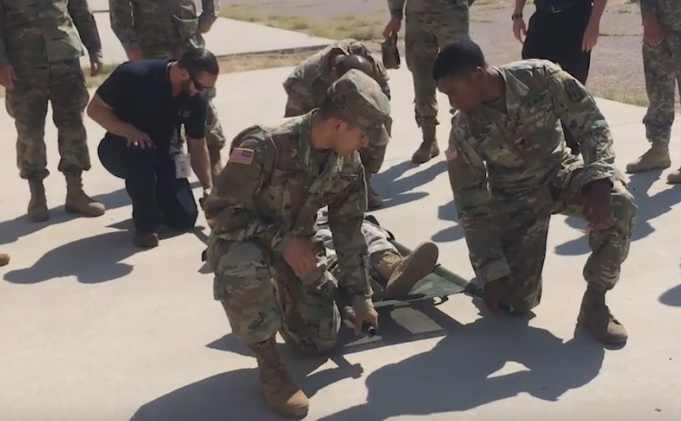As the longest war in U.S. history rages on in Afghanistan, the military continues to struggle with battling the mental wounds of combat when soldiers may be reluctant to seek help.
“I have received behavioral health counseling multiple times. It has been difficult for me to admit that I had a problem, but going and accepting has helped me tremendously,” said Sgt. Jacob Holmes, a 10-year veteran who works with the Army’s 24th Press Camp Headquarters which is a unit of soldiers/journalists, currently stationed at Fort Bliss in El Paso.
Holmes, who responded to interview questions by email, was diagnosed with Post Traumatic Stress Disorder in 2012. It is estimated that PTSD affects about 20 percent of Iraq and Afghanistan combat veterans. Although most people may have trouble coping after trauma, many will recover from primary symptoms naturally. Individuals who continue to experience problems may be diagnosed with PTSD by a psychiatrist or psychologist.
In order to be diagnosed with PTSD an adult must experience the following for at least one month: Flashbacks such as reliving the trauma repeatedly. Avoidance such as staying away from places, events, or objects that trigger the traumatic experience. Symptoms of arousal such as being easily scared, feeling “on edge”, difficulty sleeping, and angry outbursts. And finally, loss of interest in fun activities, self-blame, guilt, and trouble remembering key aspects of the traumatic event.
Holmes, who says he tries to look on the positive side of things, said the support he’s received in dealing with PTSD has had mixed success. “The treatments helped me realize the things I was doing wrong and the people I surround myself with are ultimately the key factors in my mental health. The treatment can only do so much for me, unfortunately.”
A recent report published by the Rand Corportation, Quality of Care for PTSD and Depression in the Military Health System, identified strengths and areas for improvement in treating and monitoring PTSD in Army soldiers.
“Preliminary analyses suggest that more work is needed to ensure that services are effective in reducing symptoms. When comparing performance between 2012–2013 and 2013–2014, most measures demonstrated slight improvement, but targeted efforts will be needed to support further improvements,” the report stated.
Holmes said that he knows of multiple resources for PTSD support, ranging from non-commissioned officers, who are the first line of defense in dealing with mental health, to Military One Source, a website that serves to connect soldiers and military families with support services. Holmes mentioned that Chaplains are a great source of support. In addition to behavioral health services provided by the military, Holmes says chaplains can also be a good source of support for soldiers.
“They provide a comfortable environment to talk about any issues we face,” he said.

Programs like this recent combat lifesaver course at Fort Bliss, Texas, are part of the Army’s resiliency and readiness training to prepare soldiers for the trauma of war. Photo by Sergio Cisneros, Borderzine.com
Still, there is work to be done in improving the support network for soldiers, the Rand report says, pointing to the following key findings:
- Most service members with PTSD or depression received at least some psychotherapy, but fewer received psychotherapy that was evidence-based.
- Service members with PTSD or depression use a high volume of health services and see multiple providers, suggesting the need to ensure coordination of care.
- The Military Health System continues to be a leader in achieving high rates of follow-up after psychiatric hospitalization.
- Less than half of service members receive an adequate amount of initial care when beginning treatment for PTSD or depression.
- Army demonstrated increased outcome monitoring over time and preliminary analyses suggest that more effort is needed to ensure service members who receive care achieve positive outcomes.
- Quality of care for PTSD and depression varied by service branch, TRICARE region, and service member characteristics, suggesting opportunities for quality improvement.
While preparing soldiers for combat situations, Holmes says it is important to make mental health a priority.
“I am in charge of soldiers. If I have toxic mental health, how am I supposed to take care of junior soldiers? It is up to me to train and make sure they are ready to take on the weight I was given. If we don’t have that mental health stability than who’s going to protect the country? Important is an understatement. It should be on top of all our lists to keep everyone safe and healthy.”

